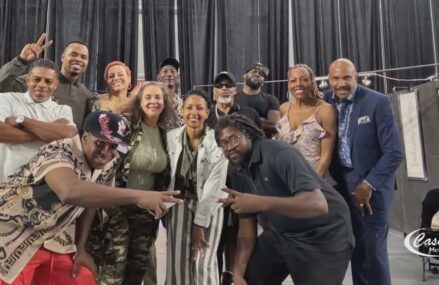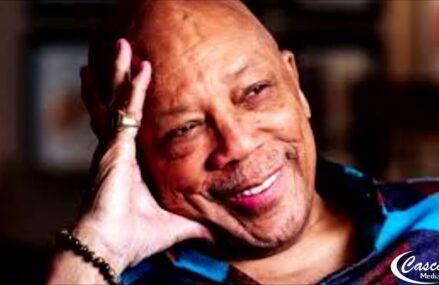1948–1950: Miles Davis Nonet and Birth of the Cool
In August 1948, Davis declined an offer to join Duke Ellington’s orchestra as he had entered rehearsals with a nine-piece band with pianist and arranger Gil Evans and baritone saxophonist Gerry Mulligan, taking an active role on what soon became his own project.[43][38] Evans’ Manhattan apartment had become the meeting place for several young musicians and composers such as Davis, Roach, Lewis, and Mulligan who were unhappy with the increasingly virtuoso instrumental techniques that dominated bebop.[44] These gatherings led to the formation of the Miles Davis Nonet, which included the unusual additions of French horn and tuba; leading to a thickly textured orchestral sound.[31] The intent was to imitate the human voice through carefully arranged compositions and a relaxed, melodic approach to improvisation. In September, the band completed their sole engagement as the opening band for Count Basie at the Royal Roost for two weeks. Davis had to persuade the venue’s manager to write the sign “Miles Davis Nonet. Arrangements by Gil Evans, John Lewis, and Gerry Mulligan”. He prevailed only with the help of Monte Kay, the club’s artistic director. Davis returned to Parker’s quintet, but relationships within the quintet were growing tense mainly due to Parker’s erratic behavior caused by his drug addiction.[38] Early in his time with Parker, Davis abstained from drugs, ate a vegetarian diet, and spoke of the benefits of water and juice.[45] Davis and Roach objected to the addition of pianist Duke Jordan, preferring Bud Powell.[46]
In December 1948 Davis quit,[38] claiming he was not being paid. His departure began a period when he worked mainly as a freelancer and sideman. His nonet remained active until the end of 1949. After signing a contract with Capitol Records, they recorded sessions in January and April 1949, which sold little but influenced the “cool” or “west coast” style of jazz.[38] The line-up changed throughout the year and included the additions of tuba player Bill Barber, alto saxophonist Lee Konitz, who had been preferred to Sonny Stitt as his style was considered too bop-oriented, pianist Al Haig, trombone players Mike Zwerin with Kai Winding, French horn players Junior Collins with Sandy Siegelstein and Gunther Schuller, and bassists Al McKibbon and Joe Shulman. One track featured singer, Kenny Hagood. The presence of white musicians in the group angered some black players, many of whom were unemployed at the time, yet Davis rebuffed their criticisms.[47] Recording sessions with the nonet for Capitol continued until April 1950. The Nonet recorded in total a dozen tracks which were released as singles and subsequently compiled on Birth of the Cool (1957).[31]
In May 1949, Davis performed with the Tadd Dameron Quintet with Kenny Clarke and James Moody at the Paris International Jazz Festival. On his first trip abroad Davis took a strong liking for Paris and its cultural environment, where he felt black jazz musicians and people of color, in general, were better respected than in the U.S.A. The trip, he said, “changed the way I looked at things forever”.[48] He began an affair with singer and actress Juliette Gréco.[49] Wikipedia,



